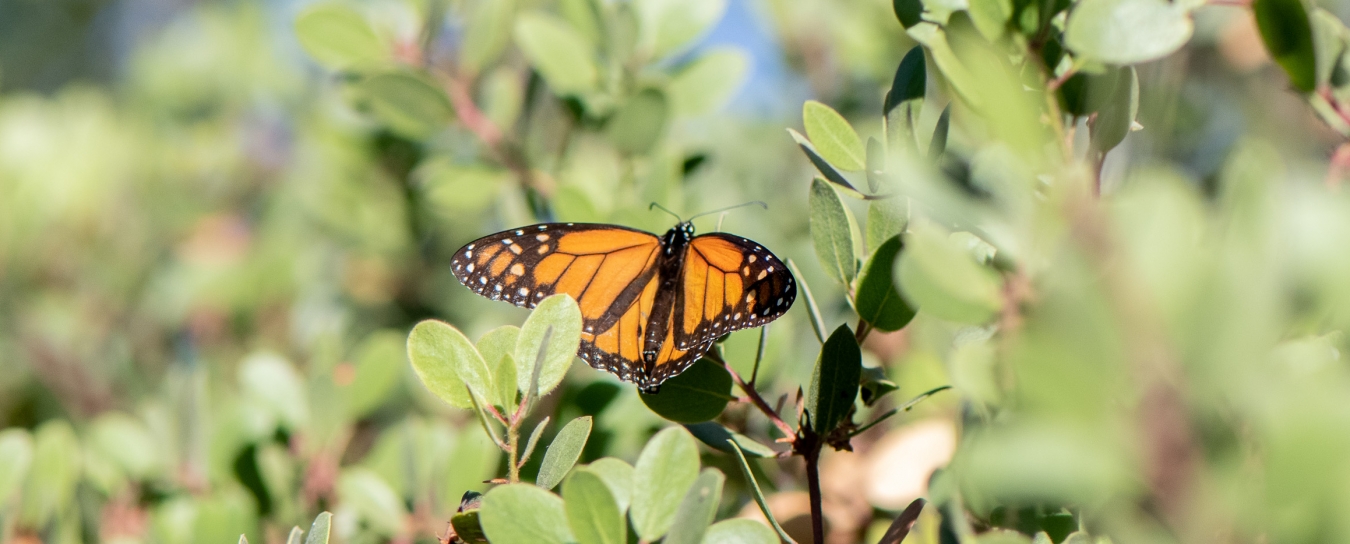
Invertebrates
See our handy guide to critters found in local homes and our Central Coast Butterfly FAQ. Browse the insects and other terrestrial arthropods we’ve identified. Check out local marine invertebrates, particularly bivalve mollusks and intertidal organisms.
- Anthropology
- Rocks & Fossils
- Invertebrates
- Vertebrates
- Botany
- Astronomy
- Fungi
- General
- Recently Asked
Bumble Bee
Hello!
What type of bee is this? And are those two yellow balls pollen? This was taken at SBMNH on Sunday.
Thanks!
Curator Response
Hi Kevin,
Thank you for sending us your beautiful bee photographs. This is a Bombus melanopygus bumblebee, and yes, those two yellow balls are pollen. So we can tell the bee you photographed was female, because male bumbles don't collect pollen.
Different bee species (S.B. is home to over one hundred!) will carry pollen in different places on their bodies. Bumblebees, like your specimen here, carry pollen in pollen baskets, or corbiculae, on their hind legs. Bumblebees are in the same family as honeybees, which also use the leg-basket strategy. Different families have different strategies. Leafcutter bees carry pollen on the underside of their abdomen. Some bees even store pollen internally in their crop.
Another similarity between bumblebees and honeybees is being social: these bees will nest together in hives with others from their same species. But the majority of bee species are actually solitary! They like to live alone, often in holes in the ground that they dig for themselves.
Stay curious,
Bee researcher and Teen Programs Manager Charlie Thrift
Kevin response:
Thank you so much for the fascinating information!


